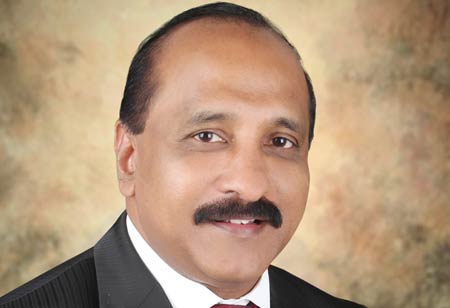Thank you for Subscribing to Healthcare Business Review Weekly Brief

Harmonizing Patient Safety and Technological Innovation in Healthcare
Healthcare Business Review
Inadequate communication is one of the most leading cause of patient complaints, adverse events including hospital deaths. Errors in communication, to a great extent, can be fixed by embracing the right technology. Technology is considered as the ‘science or knowledge put into practical use to solve problems or invent useful tools’. The science of knowledge began from the ‘stone age’ and it is evolving, evolving faster than ever before. Technological advancement encompasses every domain and has made us more efficient and productive. Technology in healthcare helps to redress grievances, reduce medication errors, lessen adverse events, monitor outcomes, improve patient safety, and ensure compliance to accreditation standards.
Using IT Judiciously
It’s a fact that busy service providers rely more and more on equipment to carry out lifesaving interventions. While doing so, some of the clinicians presume that the information technology provides reliable results all the time, whereas the literature shows that it’s not always true. This wrong notion that equipment generated results are right all the time becomes a norm especially when no immediate adverse events occur. This leads to a phenomenon called normalization of deviance - a tendency of deviating from the standard operating procedure, an inherent fallible human tendency.
Given the fact that ‘to err is human…’and unexpected adverse events do happen in any circumstances, attention should be given to detection and mitigation before it occurs. Hence, it is important that a new system and/or equipment requires to be tested in a real-world scenario, as much as possible, to identify potential problems. Competent healthcare quality professionals and biomedical engineers, who are more familiar with human factor engineering, have a major role to recognize the human tendency and organize simulation exercises and take corrective actions wherever required. ‘Standardization’ and ‘Forcing Functions’ are two major strategies adopted in healthcare to prevent inadvertent mistakes being performed by a service provider.
Standardization
Implementing standardized tools and practices within a healthcare organization helps improve patient safety. Wherever possible, equipment should be standardized to increase reliability, and reduce cross-training needs.
Standardization of Infusion Pumps: There are different types of infusion pumps used for diverse purposes in a healthcare organization and these infusion pumps work differently. To add to this complexity, many healthcare organizations use varied types of infusion pumps of different manufacturers that might be a contributing factor for human error. Realizing the importance, to reduce medication administration errors, priority was given to standardize the infusion pumps in each healthcare settings. Even after standardization of infusion pumps, medication administration errors occurred due to the dosing and concentration of the medicine infused. At this juncture, technology came up with an idea of smart infusion pump.
Smart infusion pumps are equipped with medication error-prevention software and it provides an alert to the service provider if the infusion setting crosses the configured limit. The limit can be configured with the provision to override (called ‘soft-limit’) and with no provision to override (hard limit). This technological innovation has helped to improve infusion practices, avoid serious medication errors and ensure compliance to evidence based practices. It has been recognized that ‘hard limits’ were more effective than ‘soft limits’ in preventing medication errors. Setting the hard-limit is an example of forcing function.
Forcing Function
Forcing function is an aspect of a design that prevents an unintended or undesirable action from being performed. To elucidate more on the forcing function let us take another example.
Implementing Standardized Tools and Practices within a Healthcare Organization Helps Improve Patient Safety
Request Form for Diagnostic Investigation: As an improvement project, in a multispecialty hospital, auditing the completeness of the Request Form for Diagnostic Investigation was conducted. The ‘Request Form’ must be completed by the treating physician with ‘provisional diagnosis’ or the reason for the referral. That’s an important information provided to the Radiologist, well in advance, what to look for during the analytic phase and it helps in arriving at the correct diagnosis. Initially, the completeness was just 63%. Reminder memos were sent and after several reminders for a period of 6 months, the compliance rose to 78%, but, not more. By disabling the provision to proceed further, unless the provisional diagnosis is completed, in the Hospital Information System (HIS), the treating physicians were forced to complete this vital information and we were able to achieve 100% compliance promptly.
Conclusion
This article is just a pointer, with just two practical illustrations, wherein the technology was used to ensure patient safety and quality. There is substantial evidence that implementing an e-HR (electronic Health Record) improves intra-hospital and inter-hospital communication, reduce medical errors and enhance patient safety. Moreover, computerized physician order entry (CPOE) and computerized decision support systems (CDS) are possibly valuable technological advancements in recent times. Simulation training, telemedicine, remote patient monitoring systems are few of the technological advancements gaining significance with the impact of the pandemic. Physicians need to embrace technology and the pandemic has made those previously reticent doctors to adopt new technology. It’s a wake up call and let us look for untraveled paths in our quality journey, engaging the frontline staff, inventing new avenues, recognizing the tech’s growing role in healthcare. It is imminent, we will witness really authentic hidden gems in healthcare domain.









